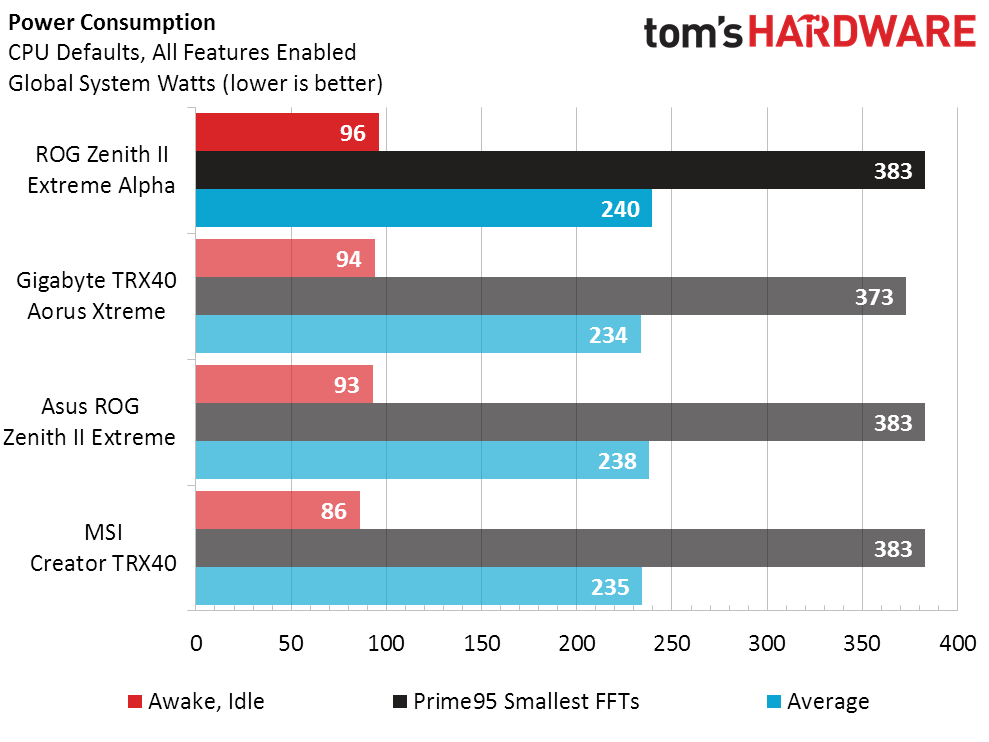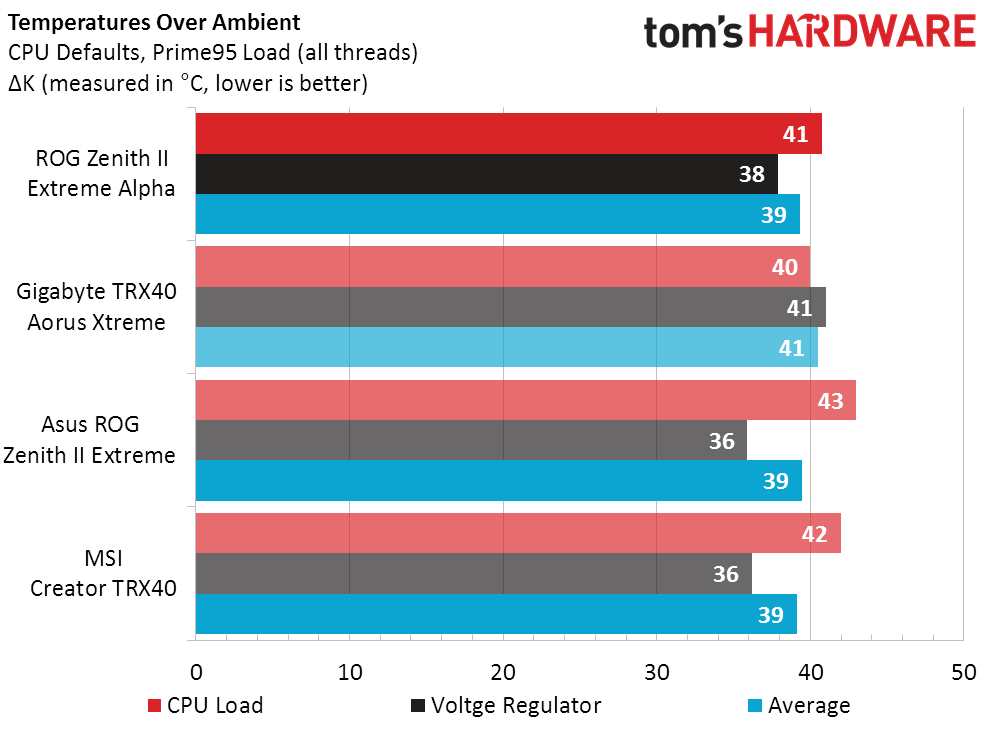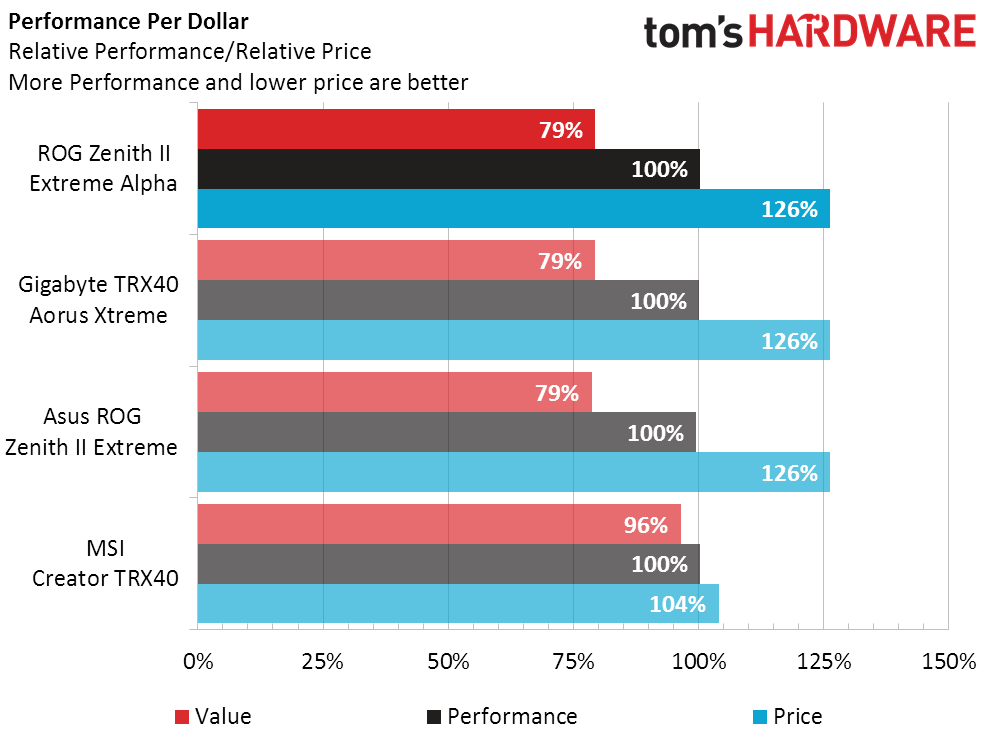Why you can trust Tom's Hardware
Sandra Memory Bandwidth shows the Zenith II Extreme beating all comers at our memory’s DDR4-3600 XMP profile. This supremacy wasn’t reflected in the memory overclocking results of our previous page.
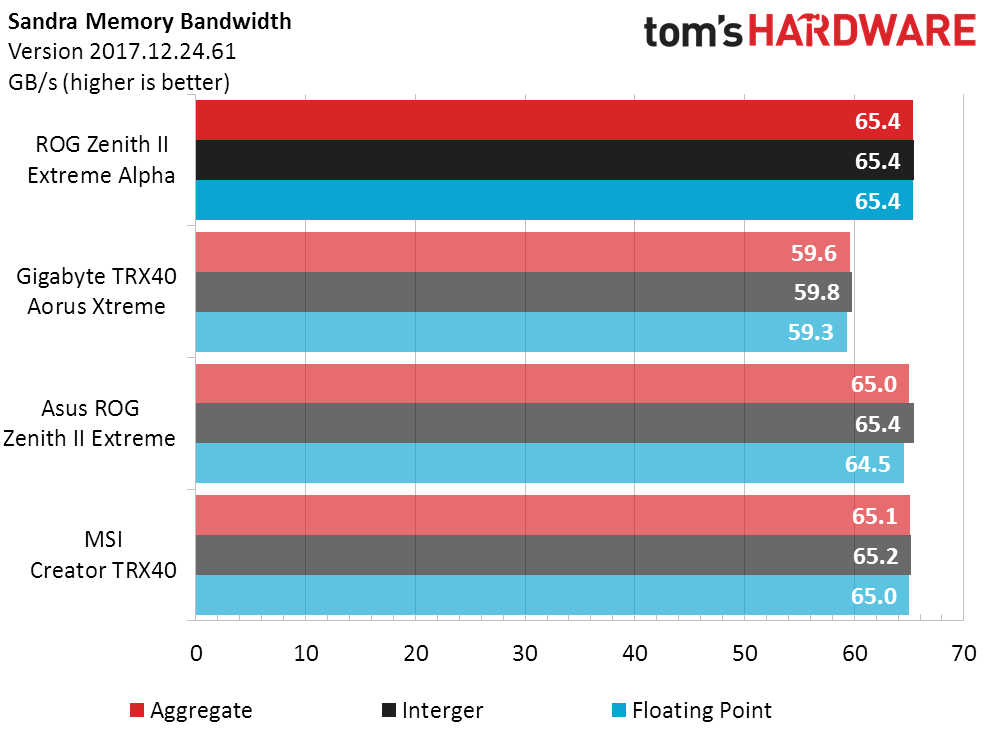
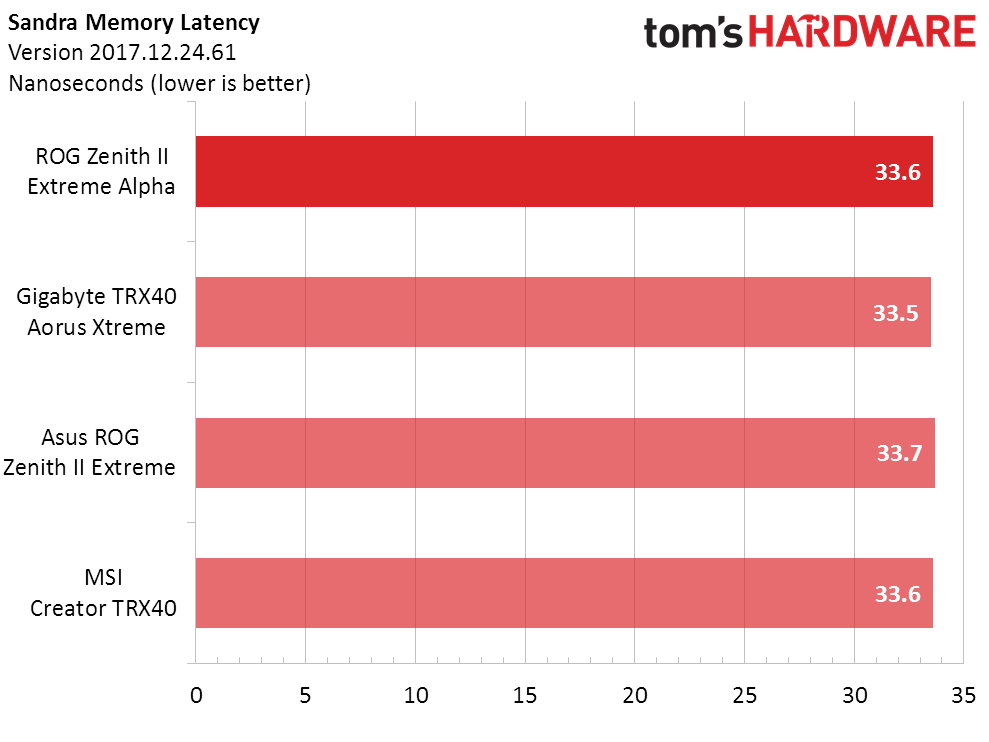
We found mixed results in 3DMark and PCMark, with MSI’s lower-cost Creator TRX40 taking a slight overall lead.
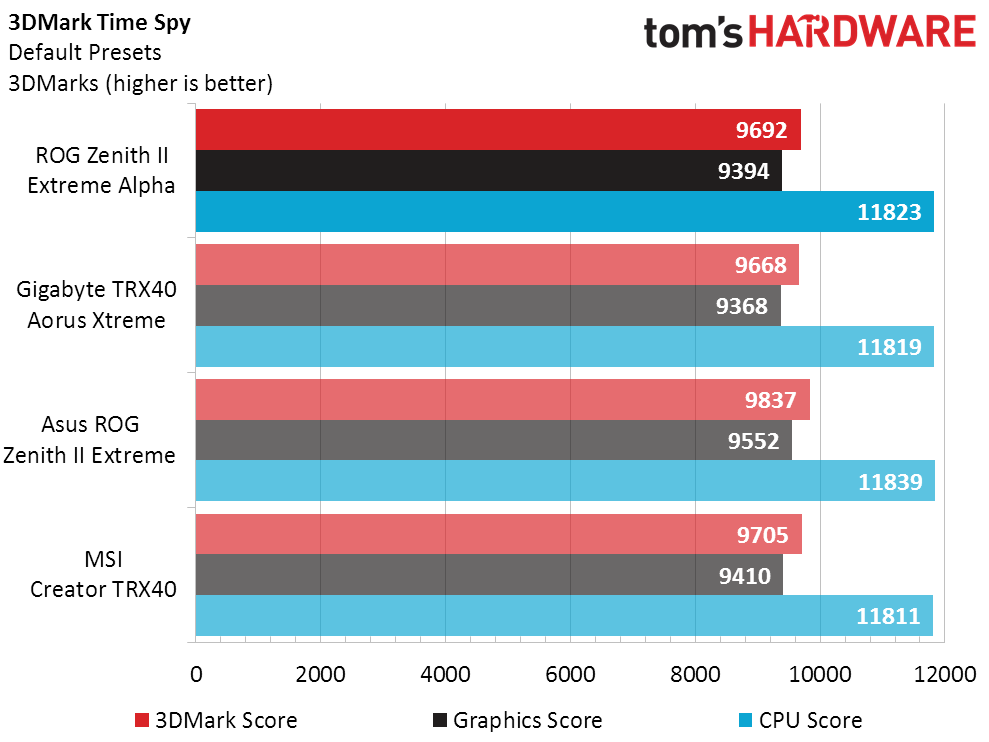
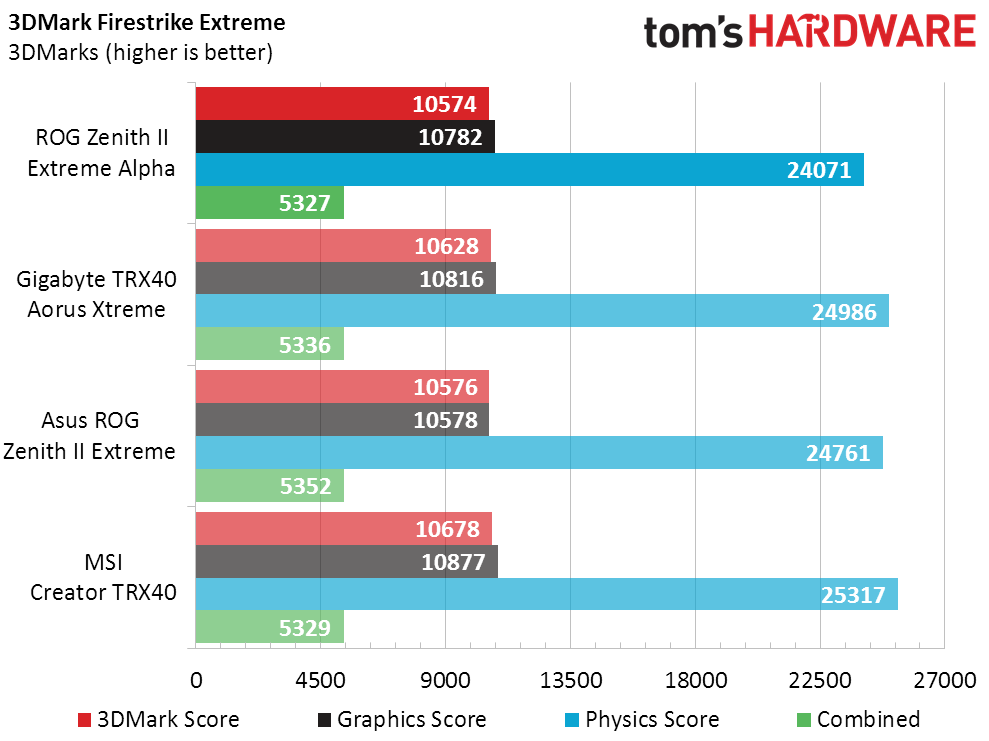
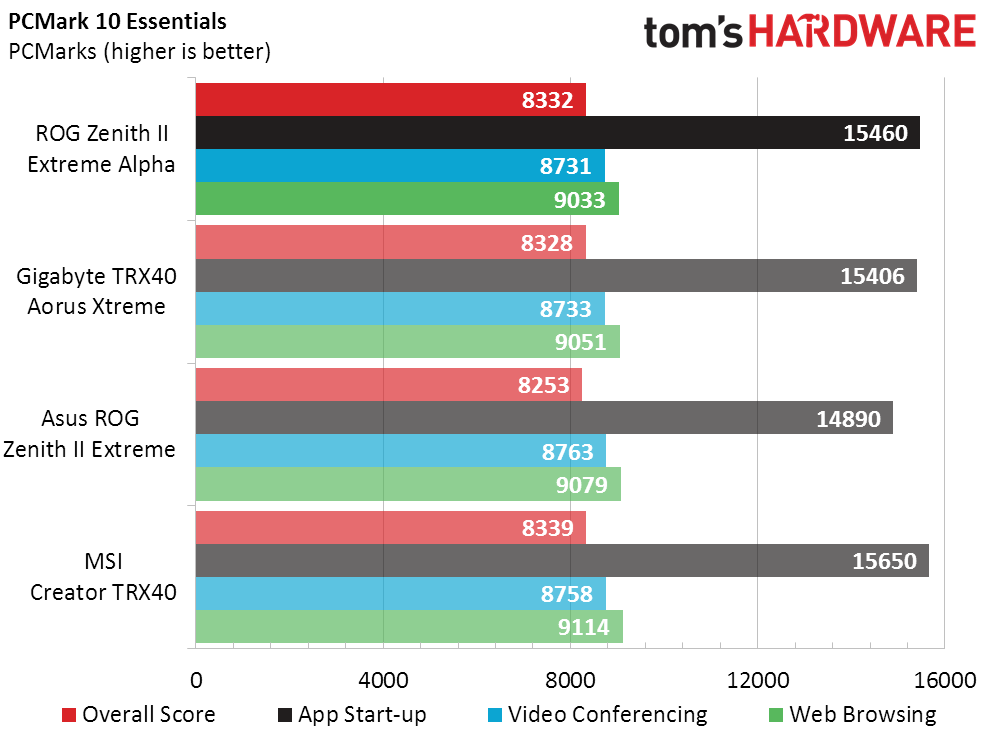
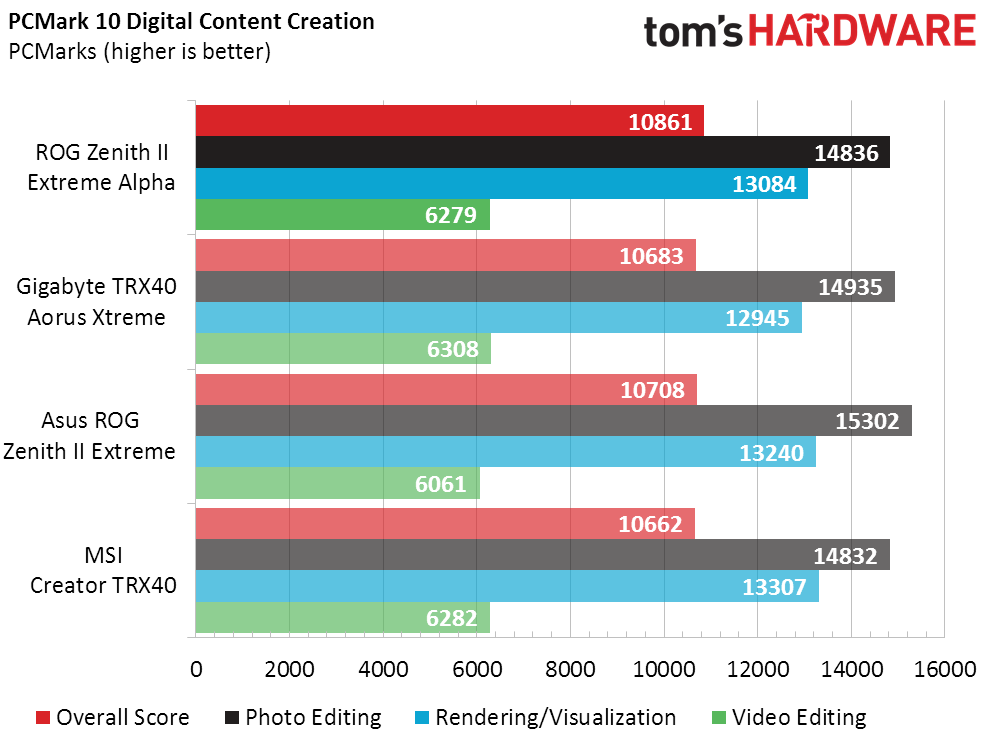
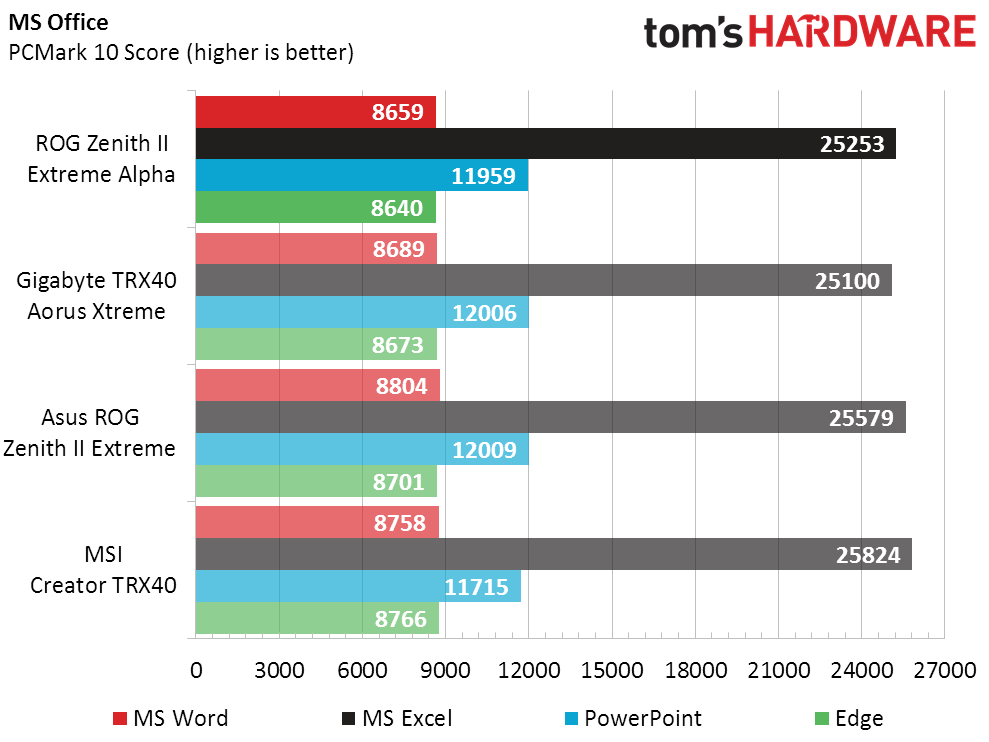
Strangely, the singular high score in Ashes by the ROG Zenith II Extreme wasn’t replicated in the ROG Zenith II Extreme Alpha. Remaining results are completely average.
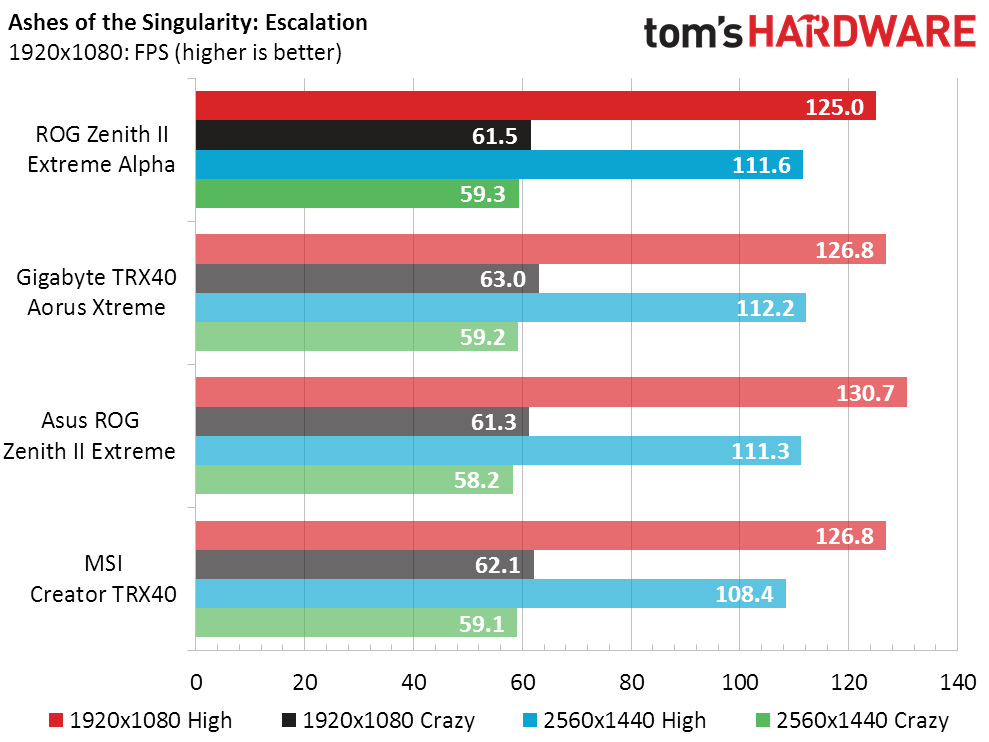

Lower is better in timed tests, yet the Zenith II Extreme Alpha took slightly longer to complete these.

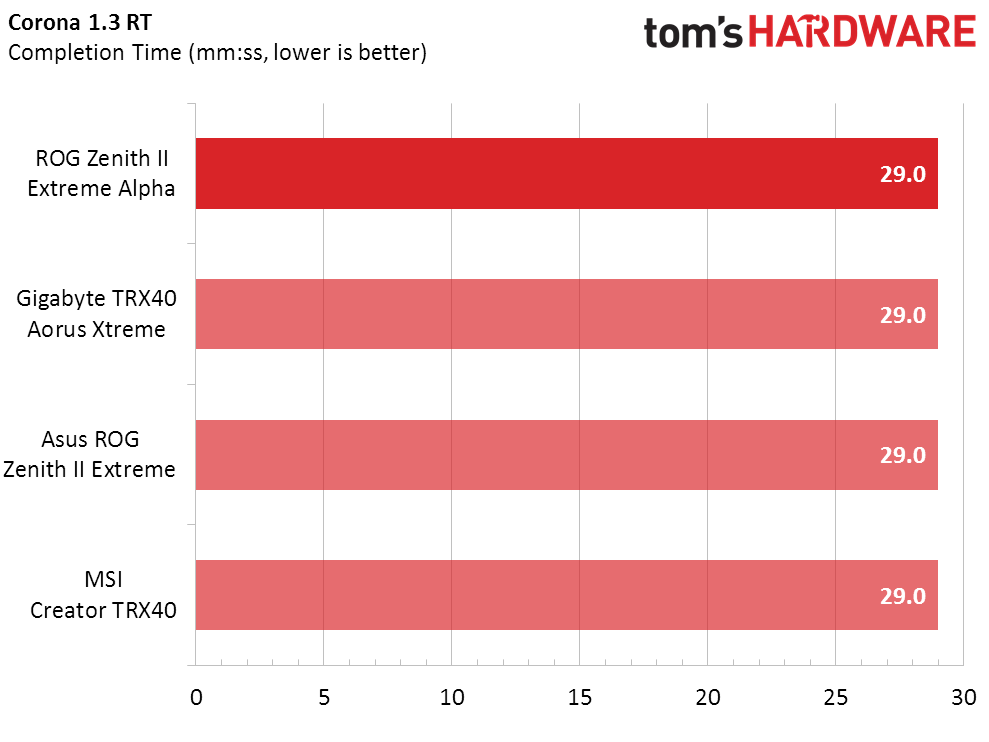
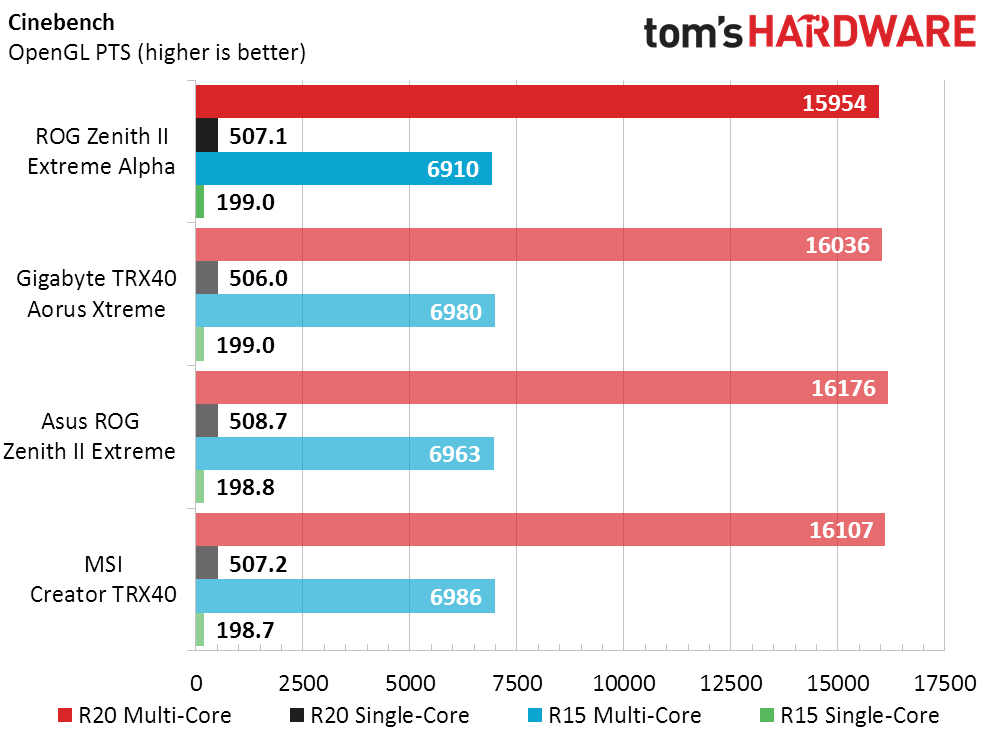
Power, Heat and Efficiency
Three of the four boards consumed similar power at full load, leaving the TRX40 Aorus Xtreme appearing miserly. We should also note that installing Asus’s tuning software without further optimization increased our complete build’s idle power from 96W to around 120W.
We tested heat in three ways on both the Zenith II Extreme Alpha and TRX40 Aorus Xtreme: Onboard thermistor, IR thermometer and attached K-type thermocouples. Our first chart shows the higher of those first two tests, at default settings.
We taped our thermocouples under the motherboard, with only the tips touching the backplate’s thermal pad and most of the exposed part touching the bare board adjacent to that thermal pad. Two of these show readings consistent with the Zenith II Extreme Alpha’s onboard thermistor.
Get Tom's Hardware's best news and in-depth reviews, straight to your inbox.
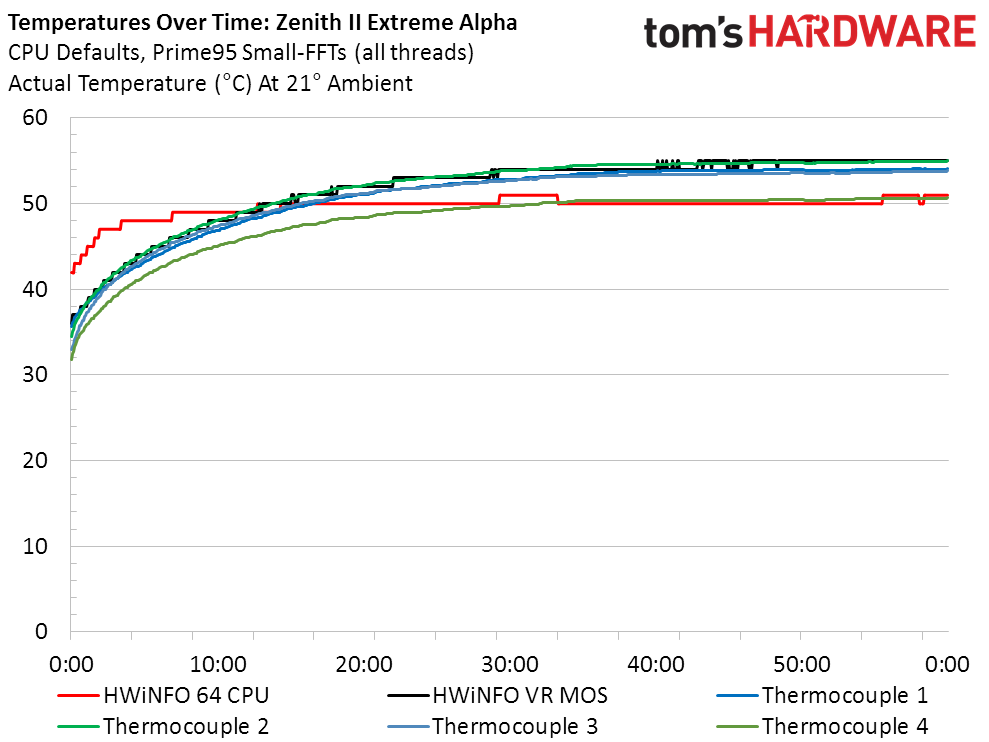
The above readings are at stock fan settings: With the normally-inaudible VR MOS fans cranked up to their ear-splitting ~9200 ROM full speed, the temperature dropped all the way to 34 degrees over-ambient.
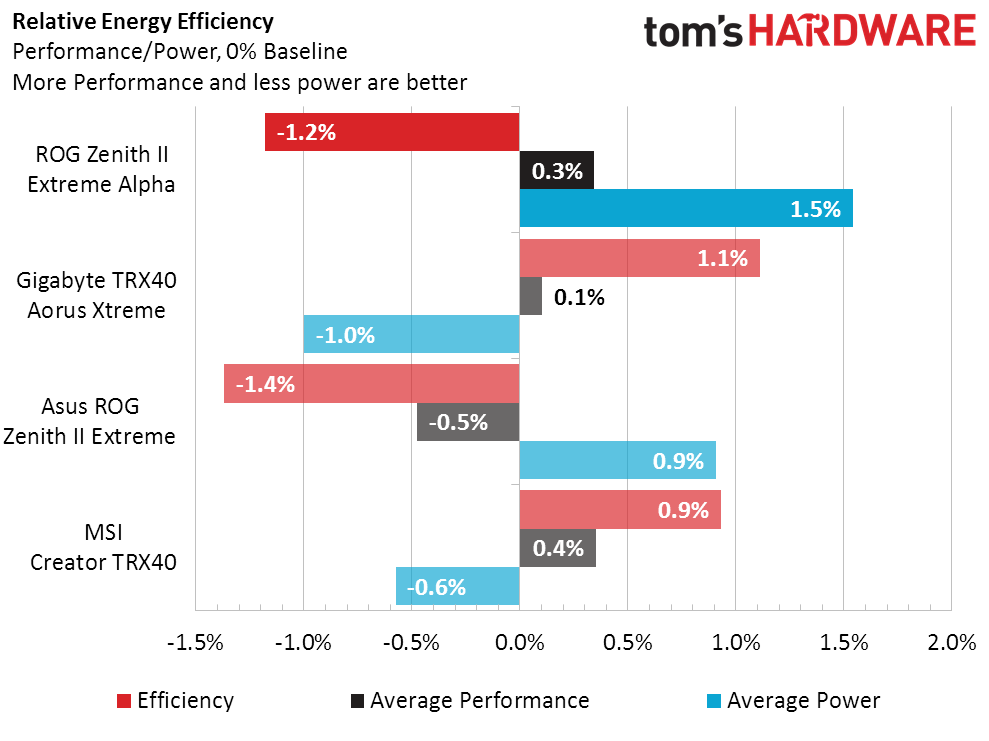
Now for some big-picture stuff: When compared to all seven of the TRX40 motherboard’s we’ve reviewed, the Zenith II Extreme Alpha came out well less than 1% ahead in performance and just over 1% behind in efficiency. It’s also more than 2% behind the efficiency score of its closest rival, the TRX40 Aorus Xtreme.
Conclusion
The TRX40 chipset applies to a wide range of boards, and those who can live without a few features such as Asus’ DIMM.2 dual-M.2 riser card or Gigabyte’s four-drive variation, Asus’s verbose system status display, Gigabyte’s dual-10Gb/s Ethernet, or Asus’ onboard overclocking enhancements can get a better deal on the MSI Creator TRX40.
Yet if we’re only to consider the $850 motherboards as a separate class, the Gigabyte TRX40 Aorus Xtreme is a potentially better solution for traditional power users, while the ROG Zenith II Extreme Alpha appears a better solution for extreme overclockers.
Indeed, Asus’s overclocking functions were far easier to use and more consistent for us, and the increased power output available from this new Alpha variation gives it an edge. Having said that, a board with both sets of enhancements might have been perfect -- as long as it didn't cost twice as much.
MORE: Best Motherboards
MORE: How To Choose A Motherboard
MORE: All Motherboard Content
Current page: Benchmark Results and Final Analysis
Prev Page Software, Firmware and Overclocking